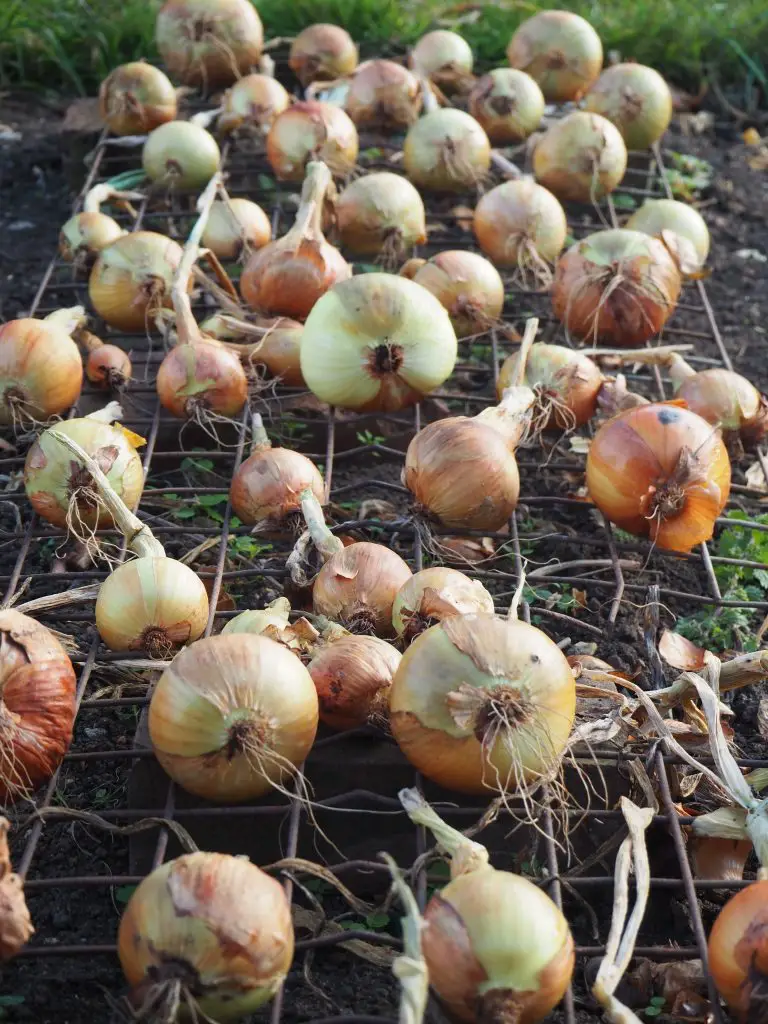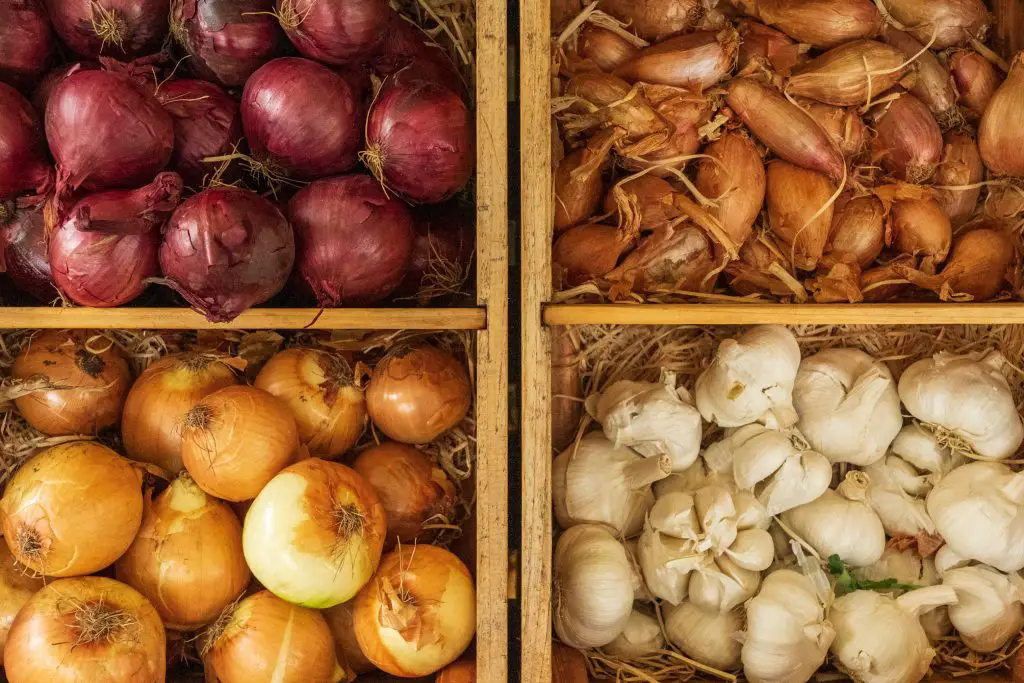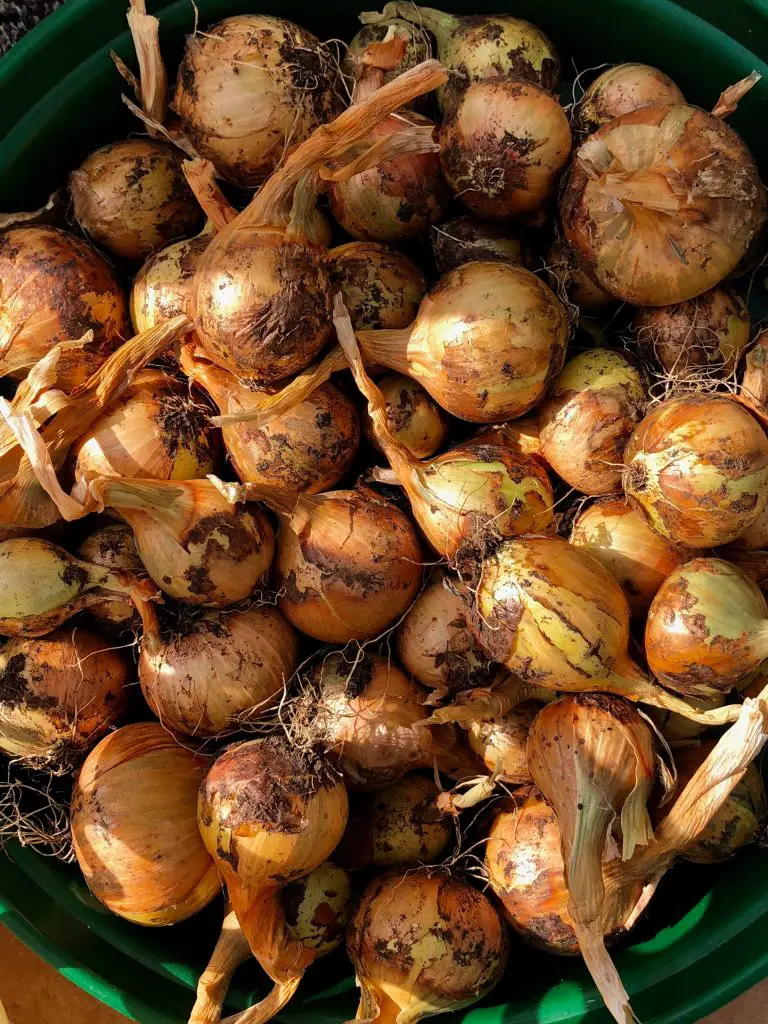Can You Eat Onions Straight From The Garden? One of the most popular crops to grow in the garden is onions as they are easy to grow and store for an extended period of time which means that you get to eat pretty much everything that you grow from the garden. However, one of the common questions that has been asked is can you eat onions straight from the garden or do you need to cure them first?
Onions can be eaten straight from the garden they do not need to be cured or dried first. Additionally, onions are also one of those plants that can be eaten pretty much at any stage from when they are a sender green onion all the way to the point at which they have a large bulb attached.
This characteristic is highly advantageous and is used by some gardeners to produce a dual-purpose onion crop through a method known as multisowing. Multisowing is when many seeds are planted together in clumps rather than as individual seedlings.
By planting a crop of onions in groups of approximately 10 seeds you will produce both spring onions and bulb onions at the same time. This is because some of these onions plants can be harvested early as spring onions and the remainder can be allowed to grow on into full size onions.

When picking the spring onions the aim is to leave approximately 4 to 5 onions in the clump. This is important because leaving more than 4 to 5 onions will result in the production of small bulbs.
Apart from producing two different crops this technique also has a couple of other distinct advantages which is why gardeners such as Charles Dowding highly recommend this technique. The first advantage of this method is that it increases the volume of crops that you can obtain from a single seed tray.
The second advantage is that the process of transplanting clumps is it significantly faster than planting individual seedlings. This means for each cell that is transplanted in the garden you are planting 5 to 10 plants rather than just one.
The third advantage is that because there are several plants within the clump they can be spaced out a little bit further apart which means that you can use a dutch hoe to weed between the plants which is generally much faster than hand weeding around individual plants.
Lastly, you also generally find that you do get a little bit higher yield by using this technique because you’re fitting more plants in an individual space and additionally when changing over crops there is additional space between the existing clumps which allows small seedlings to go in earlier reducing the time between harvests.
If you are still a little bit sceptical about that technique watch the video from Charles Dowding as it shows the crop developing from seeds all the way through to harvest.
How To Grow Onions
Onion plants are relatively easy to grow and definitely should be grown from seed rather than purchased as seedlings from a garden center. The seeds can be planted either directly into the garden or into a seed tray, however, I generally prefer the plant in a seed tray for a couple of reasons.
The first is that it reduces the time that the plants spend in the garden allowing their to be additional space for other plants to be grown. Secondly, the conditions in which the seeds can be grown can be improved by heating the seed tray which would accelerate the growth.
Lastly is that it is generally much easier to do multisowing in a seed tray rather than directly into the garden.
Onion seeds are generally planted in autumn to midwinter depending upon where you live. I personally plants seeds in midwinter but I live in a relatively warm climate zone. When planting the seedlings start by filling your seed tray with good quality seed raising mix and then firm it down into the seed tray to produce solid plugs. This is important as it makes the transplanting of clumps of onions much easier later on.
In terms of the number of seed that should be sown per cell it greatly depends upon what you are trying to achieve with your crop. If you would like to produce a crop of spring onions as well as bulbs onions we were generally recommend that you plant 10 seats per cell. However, if you are not prepared to thin out the seedlings we would highly recommend that you plant 4 to 6 seeds for sell with an aim of getting approximately 5 plants in each cell.
Once the seedlings are planted in the ground they typically take between 7 and 21 days to appear as onion seeds can be a little bit slow to grow particularly if the temperatures are relatively low. The seedlings usually need to spend at least 6 weeks in the seed tray, however, because onion seeds are relatively thin fine seedlings they can be allowed to spend even longer in the seed tray without having any detrimental effects.

When the seedlings are large enough to plant out in the garden they should be spaced out approximately 10 inches apart, which at first glance, may seem excessive, however, as mentioned above this has the advantage of allowing a hoe to be used between the clumps making weeding significantly faster.
In terms of the location, ideally, seedlings should be placed in a full sun location, however, onions will tolerate some degree of shade but it will affect their rate of growth and sometimes the size of the bulbs. The soil in this location should ideally be rich, moist, and free-draining with plenty of nutrients available.
If you have some doubt over the quality of your soil it is best to dig in a bag of compost before you plant the seedlings.
The timing of planting is quite flexible with onions because they are highly tolerant of cold conditions, however, my general preference is to wait until early spring when the last frost is approaching.
Caring And Harvesting Onions
Once the onions are in the ground there is very little required in terms of maintenance apart from maintaining a weed-free bed and ensuring they have adequate moisture, which in the early part of the season is typically not a problem.
As mentioned above the onions can be harvested at any stage throughout their growing cycle depending upon what you want in your dishes. If you are removing plants from a clump and wanting to allow other plants within that clamp to grow on it is best to twist out the plant rather than pull it out as that will reduce root disturbance.

However, if you are wanting to maximise the size and yield of your onions crop and also store the plants for an extended period of time then you can allow the plants to grow on until the foliage dies back completely and then pull out the entire crop.
If you are planning to store the only crop long-term then it is important to allow the onions to cure first as that will reduce the amount of moisture present reducing the chance of there being issues in storage.
Onions will generally store well for several months if they are placed in a cool dark location that is well ventilated. Storing onions in things such as hessian sacks, which has some degree of airflow through them, is ideal.
I hope you found this article useful and have great success with your onions. If you have any additional questions or comments please leave them in the section the below.
Relevant Articles
Is An Onion A Root Or Stem? What Part Of The Plant Are We Eating?
Do Onions Grow Underground? What Is Normal?
How Many Varieties Of Onions Are There?
